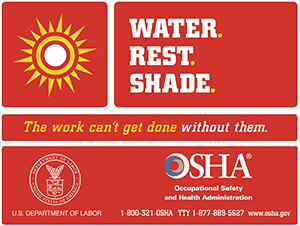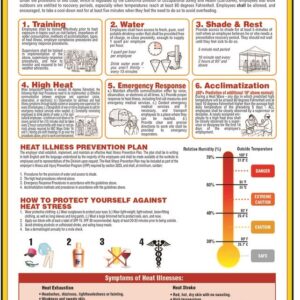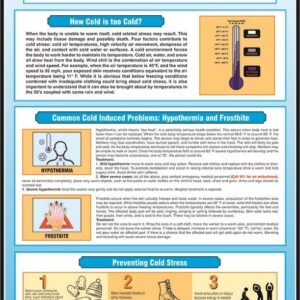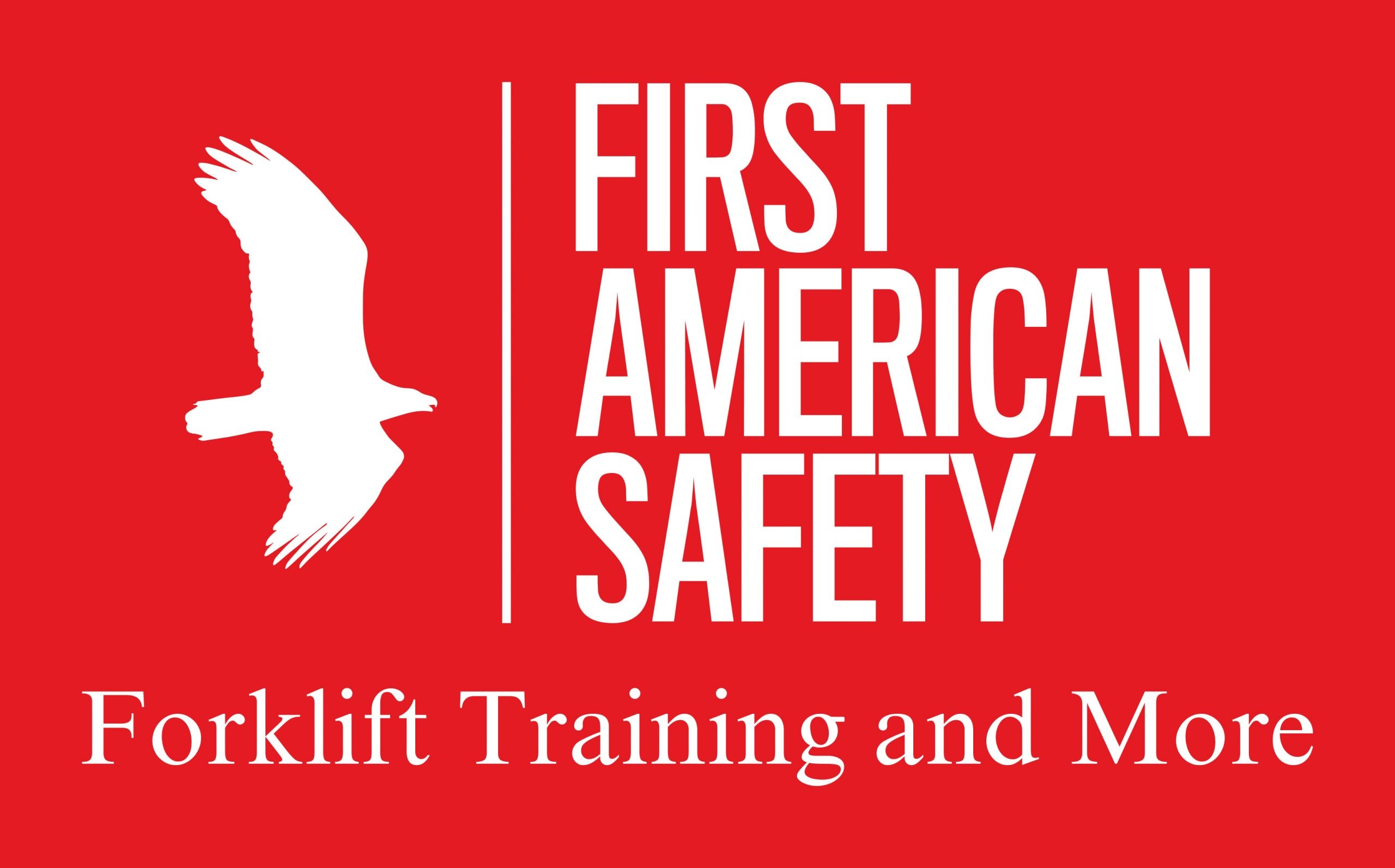Need some free safety meeting topics?
Most Effective Heat Illness Training Techniques for Construction Employees

Preventing Heat Illness on the Job
The Importance of Heat Illness Training
Heat Illness is a real threat at all times of the year especially here in California. Making sure your employees are trained on the Cal-OSHA heat illness standard is key. Training your employees on the heat illness standard helps protect you the employer as well as helping to protect and educate your employees. Employees must understand certain terms and definitions. Cal-OSHA has been known to show up to random job sites and ask employees to define random terms related to the heat illness standard. First American Safety has developed a quick training guide to help you train your employees. The information below also helps educate your employees on what heat illness is, the stages of heat illness, and what to watch for in their fellow employees on the job. Keeping water nearby and encouraging your employees to drink water is vital to prevent heat illness.
Basic Heat Illness Policies
You the employer must provide water, cups, and a trash receptacle to the employees. You also must train your employees at least annually on the Cal-OSHA heat illness standard. In addition, it is good practice to hold a tailgate safety meeting about heat illness at least once a month. Always be sure to provide documented training for new hires as well. This helps to keep the dangers of heat illness and how to prevent it fresh in your employees’ minds. Even though it does get cool here in California, it is still important to go over the standard in the cooler months. We’ve all experienced times where it could be 50-60 degrees one day and jump up to 80 degrees the next day. Helping your employees acclimatize to heat is extremely important. Do not push them too hard to get the job done, especially when temperatures change.
Read our Heat Illness Quick Training below for more information on the standard. We also offer a Heat Illness Prevention Safety Poster that can help remind your employees of the dangers of heat illness while they are on the job.
Click here to read the Cal-OSHA standards on this topic.
Heat Illness Prevention Tailgate Meeting
Heat-related illness is a serious threat to employee safety at all times of the year, but especially during the hot summer months. In order to help protect you from this threat we will discuss methods for avoiding heat illness, company and OSHA policies regarding protective measures, and the responsibilities of workers and supervisors.
Acclimatization
It will take some time for your body to adjust to working in a hot environment. This will take between two to fourteen days. During this period you are more prone to heat-related illness so you must be very careful. Drink extra water, take more frequent breaks in the shade, and reduce your amount of strenuous activity as much as is practical.
Let your foreman/manager know if you are feeling ill, dizzy, or faint from the heat and he will allow you to take a preventative recovery break so that you can cool off and drink some water. Remember that you will get used to the heat over time. While acclimatizing to heat above 80 deg. F, all employees must be closely observed for signs of heat illness. New employees must be closely observed during their first two weeks on the job. Employees taking a preventative recovery period must be monitored for symptoms of heat illness, encouraged to remain in the shade and not ordered back to work until symptoms are gone. Employees with symptoms must be provided appropriate first aid or emergency response.
Water
Employees must have access to clean drinking water at all times during their shift. Water must be fresh, pure, and suitably cool. OSHA recommends that you drink one quart of water per hour for your entire shift to stay fully hydrated. You should drink as much water as possible, even if you are not thirsty. Foremen/managers are responsible for ensuring that their employees are drinking enough water during the shift and they are responsible for obtaining water. Water must be located within a 1-minute walk from where the work is being performed. OSHA requires that cups be supplied and that there be a place to dispose of them, such as a trash bag.
Shade
Adequate shade must also be available to all employees at all times when the temperature is above 80 degrees F. If an employee needs a preventative recovery period or is feeling overwhelmed by the heat, he shall be permitted access to a cool, shaded area to cool off. Areas with air conditioning are preferable, such as a running vehicle with the a/c on. It shall be located as close as practicable to where employees are working. Trees can be used for shade as long as they completely block the sun.
High Heat Procedures
When temperatures are predicted to exceed 95*F the foreman/manager shall:
- Ensure effective observation and monitoring, including a mandatory buddy system and regular communication with employees working by themselves.
- Observe employees for alertness and signs/symptoms of heat illness.
- Remind employees throughout the shift to drink water.
- Closely supervise new employees for their first 14 days of employment.
- Provide employees with a minimum 10-minute cool-down period every two hours.
Foremen/managers are given the responsibility for ensuring that no heat-related illnesses occur under their supervision.
Prevention of Heat Illness
Here are some ways to reduce the possibility of heat illness:
- Dress appropriately for your job. Wear light clothing with light colors which will reflect the sun’s rays rather than absorb them in the case of dark-colored clothes.
- Acclimate yourself to the heat when the temperature rises.
- Drink plenty of water, even if you are not thirsty. The goal is to prevent heat illnesses altogether. Once you start showing symptoms it is already too late!
- Eat small meals throughout the day. Avoid foods high in protein as they will raise your metabolic heat.
- Avoid using salt tablets unless directed by a doctor.
- Slow down. Avoid strenuous activity on warm days as much as possible. Take more breaks to cool off as well.
- Keep an eye on your co-workers. If you recognize that they are showing signs of heat illness take them to a cool place and give them sips of cool water.
Stages of Heat Illness
Heat Cramps: This is the first stage of heat illness. Heat cramps are muscular pains and spasms due to heavy exertion. They usually involve the abdominal muscles or the legs. It is generally thought that the loss of water and salt from heavy sweating causes the cramps.
Heat Exhaustion: It typically occurs when people exercise heavily or work in a warm, humid place where body fluids are lost through heavy sweating. Fluid loss causes blood flow to decrease in vital organs, resulting in a form of shock. With heat exhaustion, sweat does not evaporate as it should, possibly because of high humidity or too many layers of clothing. As a result, the body is not cooled properly.
Symptoms include:
- Cool, moist, pale skin (the skin may be red right after physical activity.)
- Headache.
- Dizziness and weakness or exhaustion.
- Nausea.
- The skin may or may not feel hot.
Heat Stroke: Heat stroke is life threatening. The victim’s temperature control system, which produces sweating to cool the body, stops working. The body temperature can rise so high that brain damage and death may result if the body is not cooled quickly.
Symptoms include:
- Vomiting.
- Decreased alertness level or complete loss of consciousness.
- High body temperature (sometimes as high as 105 degrees.)
- Skin may still be moist or the victim may stop sweating and the skin may be red, hot and dry.
- Rapid, weak pulse.
- Rapid, shallow breathing.
First Aid for Heat Illness Emergencies
The three main goals when treating a victim of heat illness are:
- Cool the body,
- Give fluids, and
- Treat for shock by laying the patient on his back and elevating the feet about 1 foot from the ground.
For Heat Cramps and Heat Exhaustion:
- Get the employee to a cooler place.
- Have the employee rest in a comfortable position.
- If the employee is fully awake and alert, give a half glass of cool water every 15 minutes.
- Do not let the employee drink the water too quickly.
- Remove or loosen tight clothing and apply cool, wet cloths such as towels or wet sheets. Call 9-1-1 or the local emergency number if the person refuses water, vomits, or loses consciousness.
For Heat Stroke:
- Call 9-1-1.
- Move the employee to a cooler place.
- Quickly cool the body.
- Wrap wet sheets around the body and fan it.
- Wrap ice packs or cold packs in a cloth if you have them and place them on the employee’s wrists and ankles, in the armpits, and on the neck to cool the large blood vessels.
- Watch for signals of breathing problems and make sure the airway is clear. Keep the person lying down.
-
Product on sale
 Heat Illness Prevention PlanOriginal price was: $39.99.$29.99Current price is: $29.99.
Heat Illness Prevention PlanOriginal price was: $39.99.$29.99Current price is: $29.99. -
 Heat Stress Safety Poster for California$17.95 – $28.95
Heat Stress Safety Poster for California$17.95 – $28.95 -
 Cold Stress Poster$28.95
Cold Stress Poster$28.95
